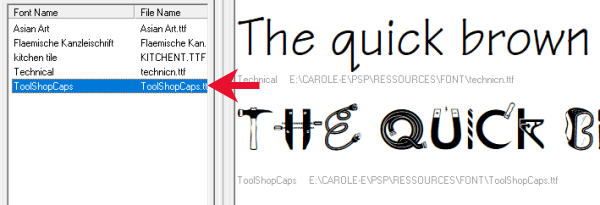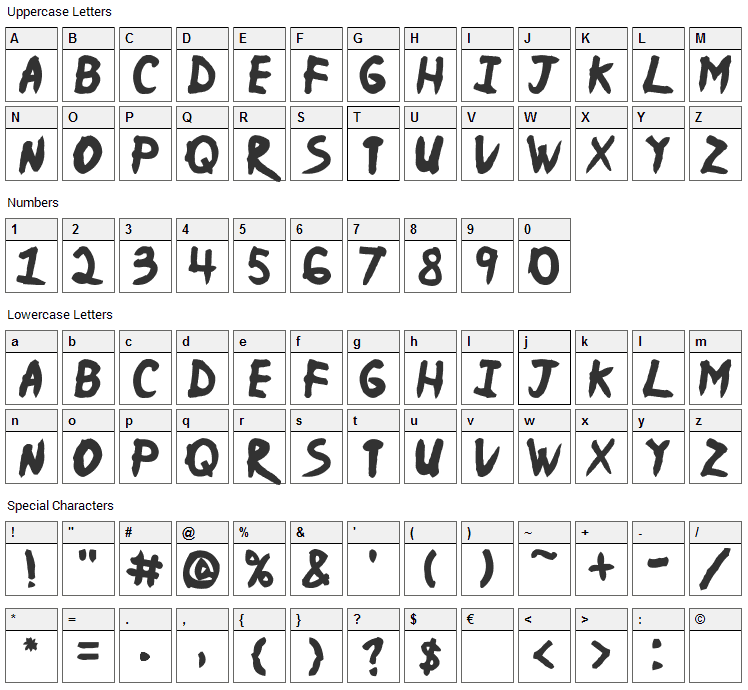
- #FONT GLYPHS PAINTSHOP PRO FULL#
- #FONT GLYPHS PAINTSHOP PRO PORTABLE#
- #FONT GLYPHS PAINTSHOP PRO SOFTWARE#
- #FONT GLYPHS PAINTSHOP PRO WINDOWS#
#FONT GLYPHS PAINTSHOP PRO SOFTWARE#
Throwing away software that works is also throwing away decades of bugfixes and experience.Īdobe's library of code for handing Type 1 fonts should have reached this "finished" state a long time ago. Software doesn't become a liability that should be removed simply by being old. > (The tragic footnote to troff is that its author, Joseph Ossanna, died tragically in 1977 the very fact that his software is humming along perfectly more than a quarter of a decade after his death is a testament to software’s unique imperviousness to wear.) troff will work indefinitely - it will never wear out.

#FONT GLYPHS PAINTSHOP PRO PORTABLE#
It hasn’t been touched in years, and probably will never be: it’s written in a portable language (C) and relies only on the most basic OS facilities. The source for troff is some of the nastiest stuff ever written - but it works. That isn’t to say that software never breaks (or isn’t broken to begin with), but software that works can work in perpetuity.

It doesn't need regular development and maintenance it will continue working indefinitely for the same reason 2 + 2 will still be 4 in the future. This means that software can reach a state where known bugs have been fixed and the desired features have been implemented. Hardware will eventually fail, but software is deterministic. Digital encoding is fundamentally a way to avoid entropy's inexorable erosive effects. Software has a significant advantage over things that have to be made in the real world: it doesn't degrade over time. The only counter-example in Adobe's entire portfolio is Photoshop: it's not great at every specific use, but its the swiss army chainsaw of raster image manipulation there's several better tools that do a specific task much better, but nobody has been idiotic enough to produce a tool that does all of them mediocrely at the same time. I can repeat this statement for basically everything Adobe makes: of formats they invented, they don't comply with their own specification while everyone else does, and there is a better domain-specific tool out there that replaces the use of them. They are not the best in class, and also produce PDFs that don't comply with the relevant specifications.

People, usually, do not use Adobe tools to author PDFs. They are not the best in class, and also produce fonts that don't comply with the relevant specifications. People, usually, do not use Adobe tools to author fonts.

Type 3 is not supported by OpenType's OTF or by WOFF, yet I can transform existing Type 1 formats (of which there are several) into OTF or WOFF, and continue using them with Freetype, DirectWrite, OSX's renderer, and in all major web browsers, with their glyphs exactly as intended by the original artist. In the future, we're just going to go back to grayscale AA, no hand-hinting at 9-14px ranges, no subpixel rendering, and at this scale hinting at all has a negligible effect. This was designed to be a push into display-oriented fonts, instead of only having a font format that is optimal for print.Įxcept TrueType hinting already has existed for 30 years, and hand-hinting is falling out of fashion as 200%+ DPI is becoming the norm.
#FONT GLYPHS PAINTSHOP PRO FULL#
Adobe's only contribution to any of this was providing Type 1/Type 2 glyph support (which was already standardized as ISO 9541).Īdobe's proposed replacement, which never was adopted, is Type 3: Type 1/2 fonts, but with the full power of Postscript to manage the actual rendering (as to do hand-tuned hinting, and such).
#FONT GLYPHS PAINTSHOP PRO WINDOWS#
Type 1 fonts can never go away, and are required to be implemented in one form or another.įor example, the actual outlines (once losslessly transformed into CFF/Type 2) are required to be supported by any OpenType-speaking rasterization engine until the end of time this is as per ISO/IEC 14496-22 aka MPEG4 Part 22, a specification that is mostly Microsoft contributions, building on top of Apple's TrueType font specification (which was also adopted by Microsoft circa Windows 3.1). I get your sentiment, but what Adobe does is of almost no consequence to the rest of the world.


 0 kommentar(er)
0 kommentar(er)
